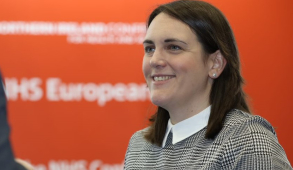News / Diagnostic strategy key to recovery (Wales)
The new Diagnostics recovery and transformation strategy was a key objective in last year’s planned care transformation plan. Health and social services minister Eluned Morgan said that around 85% of all patient pathways involved diagnostic testing and last year’s transformation plan acknowledged that diagnostic capacity in Wales was not sufficient to meet the demands on the service.
There has been no reduction in the waiting list in the last year. In February 2022 nearly 107,000 people were waiting for diagnostics. The latest figures for February this year show this has increased to 114,000.
‘Exploration of the historical, current and likely future needs for diagnostic services has identified areas that will require specific focus in order to ensure that our services are sustainable and drive down inequality across Wales,’ said Ms Morgan. ‘These areas include increasing access to diagnostics through the development of regional diagnostic hubs, exploring regional and national solutions for service delivery to improve safety, throughput and efficiency, and support for the diagnostic workforce.’
The new strategy identifies nine themes, including people and patients, workforce, estates and service transformation. Under a digital theme, it stated that all test requesting will be integrated and digitalised via single national platforms, with reporting across health board boundaries, and that artificial intelligence solutions will be adopted.
As part of changes in estates, the strategy said that community diagnostic hubs would be provided using managed service contracts. There would be investment in upgrading existing facilities and ‘cold’ – non-urgent - laboratory services would be consolidated into regional footprints to drive efficiency.
However, there were no figures in the strategy for new investment. The Welsh government claimed that many of the building blocks were already in place ‘with prior commitments and investments in key areas that will support the next phase of our diagnostic journey in Wales’.
A spokesperson said the government had allocated £1bn during this Senedd term for the transformation and recovery of planned care services. ‘Specific funding of up to £50m has been identified to support regional developments of additional capacity in both diagnostic and planned care, which will be made available this year,’ they said.
Other developments, such as the national endoscopy programme and the genomics programme had already been funded.
Welsh NHS Confederation assistant director Nesta Lloyd-Jones (pictured) welcomed the new strategy. ‘The hard work and determination of staff to tackle waiting lists is evident in recent performance figures and diagnostics plays an important part in patients’ treatment pathways,’ she said. ‘This renewed focus on improving diagnostic facilities and expanding the workforce should help more people be seen more quickly and, wherever possible, outside of hospital settings and in the community, freeing up capacity in hospitals.’
Related content
HFMA London Branch, SDN and London Finance Academy look forward to welcoming you to the Annual conference 2024
This event will bring together professionals from the finance and technology sectors to explore the power of AI within NHS finance.